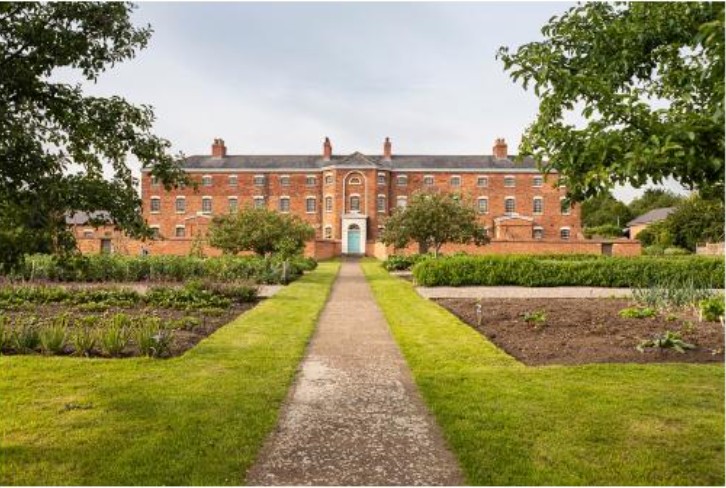Church Building – History
In 1808, the Southwell Parish Workhouse was constructed on Moor Lane
(now Nottingham Road) in Southwell, Nottinghamshire. This earlier building is
often confused with the more famous Thurgarton Hundred Incorporation
Workhouse, built in 1824 and now managed by the National Trust.
The 1808 Southwell Parish Workhouse was built to accommodate 84 paupers
from the local parish. It was a community solution to the rising cost of outdoor
poor relief, where parishes would give food, fuel, or clothing to the destitute.
The Reverend John Thomas Becher promoted this idea of combining parish
funds to build a central workhouse.
It was a small, three-storey brick building designed by Reverend J.T. Becher
and an unnamed associate. The structure featured an oval central hub with
two short wings, as seen in the plan here.
Southwell workhouse 1808
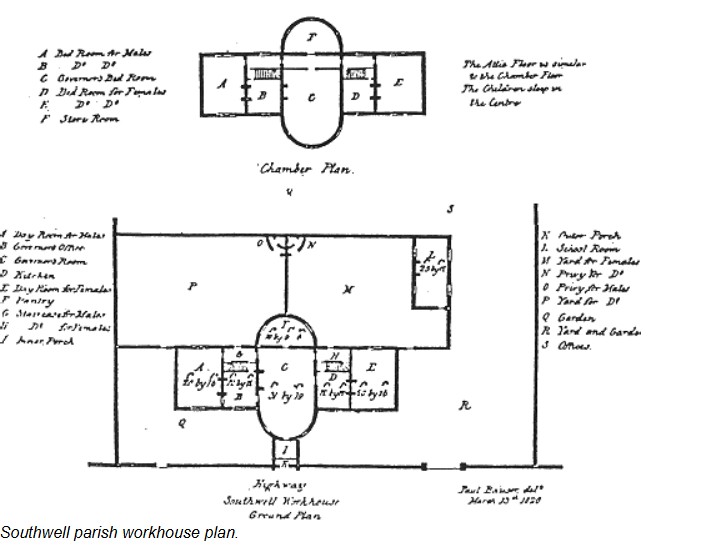
After the Poor Law Amendment Act of 1834, inmates were transferred to the
larger Thurgarton Incorporation workhouse on Upton Road
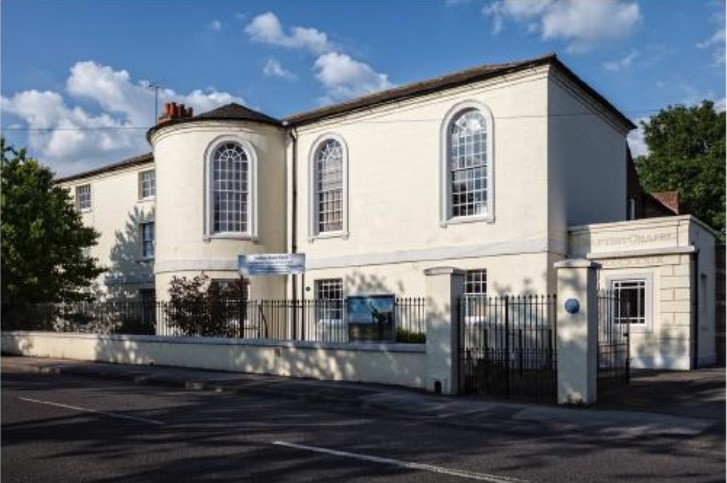
The similarity in design, with the central circular section and two wings to
separate the male and female residents, can be clearly seen.
The system at Southwell, c. 1808–1834
Though the later 1824 workhouse became the notorious national model, the
earlier institution on Moor Lane already operated with Becher’s harsh, cost-
cutting philosophy.
The system was designed to deter all but the truly desperate from seeking
help. The conditions were intentionally basic and monotonous

Becher believed that the poor could help themselves and that poverty was
caused by idleness. Hard, repetitive labour was meant to reform the character
of the inmates.
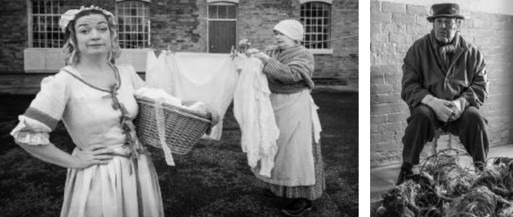
Even at this early stage, inmates were strictly separated by gender and age.
This policy broke up families and ensured minimal contact between men,
women, and children. This system was continued in the later workhouse, and
the ideas pioneered by Reverend Becher and his associate George Nicholls at
Southwell were influential enough to become a blueprint for the 1834 New
Poor Law.
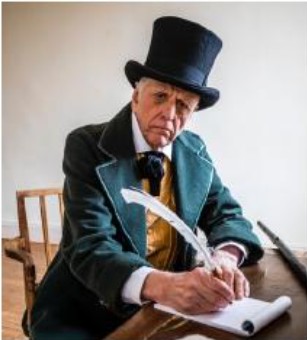
The newer National Trust Workhouse is open to thepublic, often with volunteers reenacting life as it was when the workhouse was operational. In summer
months they offer history walks through Southwell, led by the Workhouse Master, taking in sites connected to its history. Southwell Baptist Church is included in this tour because of the connection between the two buildings

